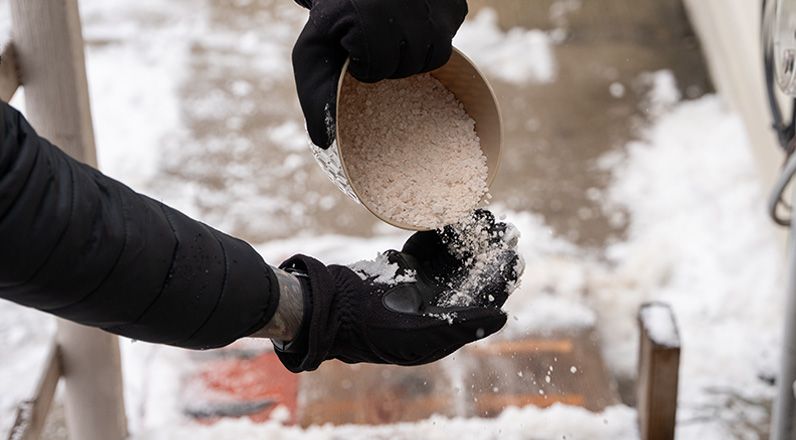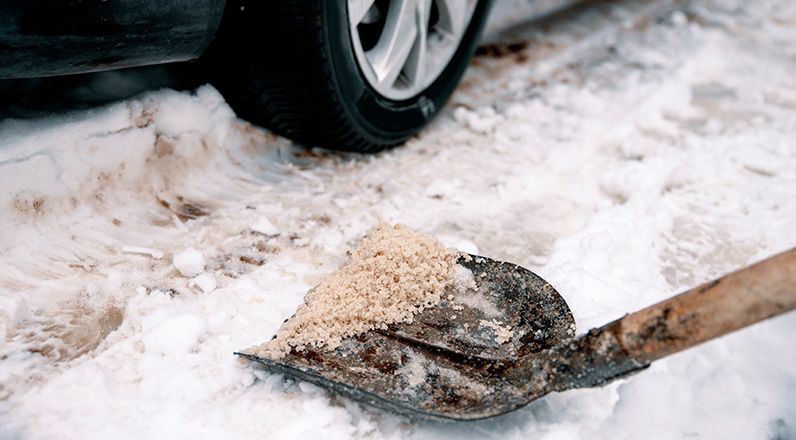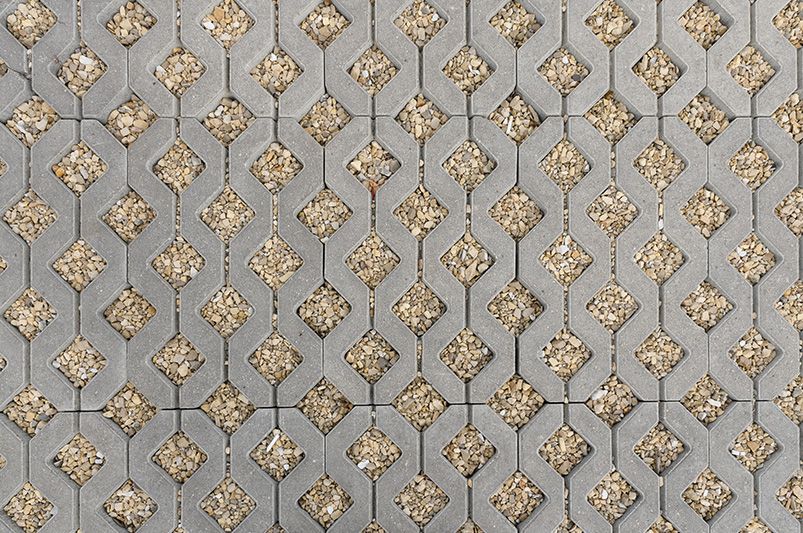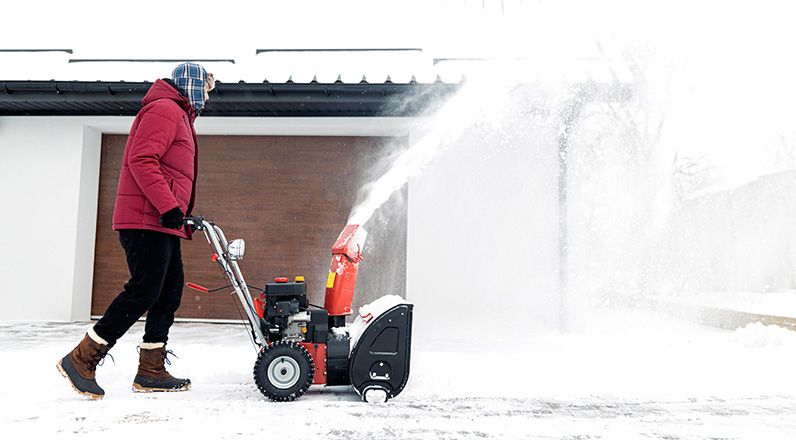
Eco-Friendly De-Icing Tips for Your Home
Published: 20/11/2024 | Updated: 20/11/2024
Eco-Friendly De-Icing Tips for Your Home
Winter’s icy grip often brings with it the challenge of keeping driveways, sidewalks, and pathways safe from slippery conditions. While traditional de-icers may seem like the easiest solution, they often come with hidden environmental costs. Chemicals used in many commercial de-icing products can harm your plants, damage soil, and pollute waterways, leaving a lasting impact on your property and the planet.


This winter, there’s a better way to tackle ice and snow without compromising the environment. Eco-friendly de-icing alternatives not only protect your home but also contribute to a greener, healthier landscape.
At ShrubHub, we’re passionate about sustainable landscaping, and our weekly blog is full of tips and solutions for maintaining a beautiful, eco-conscious outdoor space. In this article, we’ll explore the best environmentally friendly de-icing methods to help you enjoy a safer, greener winter.
The Problems with Traditional De-Icers
While commercial de-icers are effective at melting ice quickly, their long-term impact on your environment and property can be severe. Here’s a closer look at the hidden dangers of these products:
1. Chemical Damage to Plants and Soil
Most de-icers, especially those containing sodium chloride (rock salt), can wreak havoc on your landscape. The salt seeps into the soil, altering its composition and preventing plants from absorbing essential nutrients. This often leads to weakened vegetation and barren patches in your yard come springtime.
2. Contamination of Water Sources
Runoff from chemical de-icers often finds its way into storm drains, streams, and groundwater. This pollution can harm aquatic life and disrupt local ecosystems, making even small-scale usage a widespread problem.
3. Risks to Pets and Wildlife
De-icing chemicals can be hazardous to the paws and health of pets and wildlife. Animals that walk on treated surfaces may ingest these substances while grooming, leading to irritation, stomach issues, or even more serious health concerns.
4. Human Health Hazards
When tracked indoors, de-icer residue can irritate skin and eyes, especially for children who often play on the floor. Some chemicals even release harmful fumes, impacting indoor air quality.
5. Infrastructure Damage
The corrosive nature of many de-icers doesn’t just affect the environment—it also harms paved surfaces and infrastructure. Over time, chemicals can weaken concrete, asphalt, and metal, leading to costly repairs or replacements.
Understanding these risks is the first step to making better choices. In the next section, we’ll introduce environmentally friendly alternatives that are safe for your home, pets, and the planet.

Top Eco-Friendly De-Icing Alternatives
When winter weather strikes, keeping your walkways and driveways safe doesn’t have to come at the expense of the environment. There are plenty of eco-friendly de-icing options available that offer effective results without the harmful side effects of traditional products. Let’s explore the best alternatives:
1. Sand and Gravel
For a no-chemical approach, sand and gravel are excellent for adding traction to icy surfaces. They don’t melt the ice but significantly reduce slipping hazards, making them ideal for areas prone to foot traffic. Plus, they’re safe for plants, pets, and waterways when used sparingly.
2. Calcium Magnesium Acetate (CMA)
Derived from natural substances like limestone and acetic acid, CMA is a biodegradable and plant-friendly alternative to traditional salts. It works effectively in lower temperatures and minimizes corrosion on paved surfaces, making it a go-to choice for environmentally conscious homeowners.
3. Beet Juice Mixtures
This innovative solution is gaining popularity as a natural and biodegradable de-icer. Beet juice can be mixed with rock salt to reduce the overall chemical content while improving melting efficiency. It’s gentle on plants and pets while offering an eco-friendly way to tackle ice buildup.
4. Eco-Friendly Commercial Products
Many companies now produce de-icers specifically designed to minimize environmental impact. When shopping, look for products labeled as "biodegradable," "pet-safe," or "eco-friendly." Products that use magnesium chloride or other non-toxic compounds are often better for your home and surroundings.
By choosing these alternatives, you can maintain a safe and accessible property during winter without contributing to environmental damage.
DIY De-Icing Solutions for Your Driveway and Walkways
Looking for a budget-friendly way to keep your property safe from ice while staying environmentally conscious? With a few simple ingredients you may already have at home, you can create effective DIY de-icing solutions. Here’s how:
1. Vinegar and Water Solution
- Ingredients: 2 parts vinegar, 1 part water
- Instructions: Mix vinegar and water in a spray bottle. Apply it to icy surfaces to melt thin ice layers.
- Why It Works: The acidity in vinegar lowers the freezing point of water, helping to dissolve ice.
2. Baking Soda Mix
- Ingredients: 1 cup baking soda, 2 gallons of warm water
- Instructions: Dissolve baking soda in warm water and pour the mixture over icy spots.
- Why It Works: Baking soda’s salt content makes it a mild ice-melting agent without harming plants or pets.
3. Rubbing Alcohol Spray
- Ingredients: 2 parts rubbing alcohol, 1 part water
- Instructions: Mix in a spray bottle and apply to icy areas. For stubborn spots, repeat as necessary.
- Why It Works: Rubbing alcohol has a much lower freezing point, making it an effective ice remover.
These DIY de-icing solutions are simple, cost-effective, and gentle on your landscaping, helping you maintain safety without chemical damage.

Preventative Measures for Ice Control
Taking steps to prevent ice formation is just as important as dealing with it after the fact. Here are some proactive strategies to keep your walkways and driveways ice-free:
1. Seal Cracks and Crevices
- What to Do: Before winter, inspect and seal cracks in your driveway or walkways using a weatherproof sealant.
- Why It Works: Cracks collect water, which can freeze and expand, creating slippery patches. Sealing these gaps minimizes ice formation.
2. Install Permeable Pavers
- What They Are: Permeable pavers allow water to drain through, reducing surface runoff and preventing standing water that can freeze.
- Why It Works: By improving drainage, these pavers minimize the risk of ice buildup while being eco-friendly.
3. Snow Removal Best Practices
- What to Do: Clear snow as soon as possible after a snowfall using a shovel or snowblower. Apply eco-friendly de-icers immediately after removal.
- Why It Works: Prompt snow removal prevents it from compacting and turning into ice, making de-icing easier and more effective.
By combining DIY solutions with preventative measures, you can enjoy a safer winter season without harming your property or the environment.



